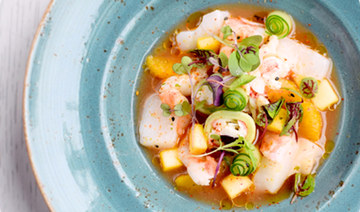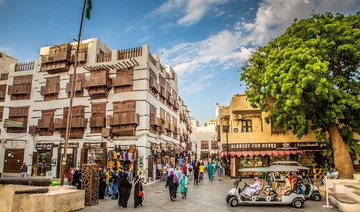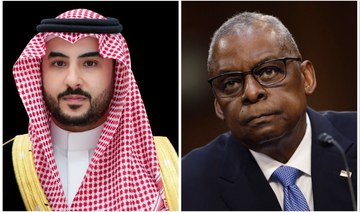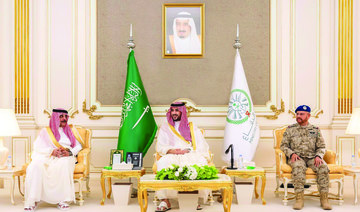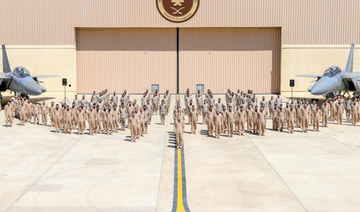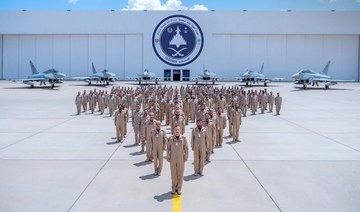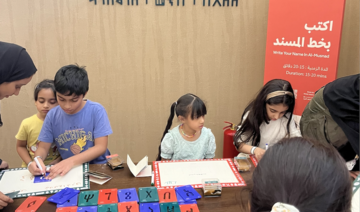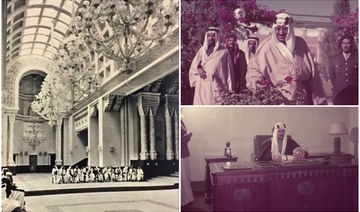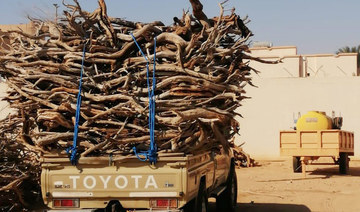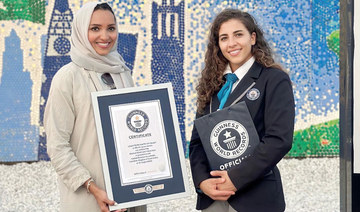RIYADH: The King Abdul Aziz Foundation for Research and Archives (Darah) has published highlights of Jeddah’s heritage since the pre-Islamic era and the use of the city as a port for Makkah by Caliph Uthman ibn Affan in 647.
Darah documented the era’s buildings, neighborhoods, balconies and windows, found in the architecture of the “Historical Jeddah” area, on its Twitter account.
Those characteristics are still being appreciated, making Jeddah an open museum that was added to UNESCO’s World Heritage Sites list in 2014.
While documenting the establishment and unification of the Kingdom, Darah mentioned the arrival of King Abdul Aziz to Jeddah in 1925, where he stayed in the house of Nassif and used a council room and a prayer room next to Al-Hanafi Mosque.
The city became a large one and became the gate of the two holy mosques and the Kingdom’s first port.
Darah highlighted the area’s important heritage and historical sites and buildings such as historical mosques of unique architectural style, in addition to the city’s markets.
Jeddah’s wall was built by Hussein Al-Kurdi, one of the Mamluk princes, during his campaign to fortify the Red Sea against attacks by the Portuguese.
He equipped the wall with fortresses, towers and cannons to stop invading ships and dug a trench around the wall.
Darah noted that the wall, which was built with the help of Jeddah’s residents, had two doors, one from the side of Makkah and the other from the side of the Red Sea. It also had six towers each with 16 branches. Six doors were built — Bab Makkah, Bab Madinah, Bab Sharif, Bab Jadid, Bab Al-Bant and Bab Al-Magharibah — before Bab of Al-Siba was added at the beginning of this century.
The wall was torn down because it merged with the urban area in 1947.
The city was divided into several neighborhoods inside the perimeter of the wall called “Hara.” These were named according to their geographical location inside the city by the events that made them famous: Harat Al-Mazloum, Al-Sham, Al-Yaman, Al-Bahr and Al-Karantina.
The city’s residents built their houses from rocks they extracted from the 40th lake before modifying them by hand to fit according to their sizes next to the wood they brought from neighboring areas such as the Valley of Fatima or imported from other countries, mainly India.
They used the contents from the Sea of Mud to strengthen the structure.
These houses look a lot like modern cement buildings. Some of the famous buildings still found today are the houses of Al-Nassif, of Al-Jamjoum, Al-Baesh, Al-Kabel, Al-Banaja, Al-Azahed and Al-Sharbatli.
Darah also documented the most famous mosques in Jeddah’s historical area such as Al-Shafei Mosque, Uthman ibn Affan Mosque, Al-Basha Mosque, Akkash Mosque, Al-Memar Mosque, Al-Rahma Mosque, King Saud Mosque, Al-Jaffali Moque and Hassan Anani Mosque.
The old neighborhoods still carry a touch of the past and are surrounded by old handicraft and traditional shops. Significant public markets in the historical area include Al-Alawi Market, Kabel Market and Al-Nada Market.
Some of the most important specialized markets in Jeddah’s historical area are the fish market, also known as Al-Banqala, the vegetable and butcher’s market in Al-Nawariyyah at the end of Kabel Street, the large fabric market, Al-Khaskiyah, located behind Sheikh Mohammed Nassif’s house, Al-Nada Market, Al-Jami, named after Al-Shafei Mosque, Al-Hababa Market located in Bab Makkah, Al-Hiraj auction Market in Bab Sharif, Al-Badou (Bedouin) market in Bab Makkah, Al-Aser in Bab Sharif, Al-Baraghiyah, where donkey, mule and horse saddles were made, and Al-Sabhiyah in Al-Khaskiyah where prayer beads were made.
Jeddah was also known for its “Khanat” (“Al-Kaysariyah”) — markets made up of a number of small shops.
Some of the most important “Khanat” of Jeddah’s historical area are Khan Al-Hunud, Khan Al-Kasaba, where fabrics were sold, Khan Al-Dallalin and Khan Al-Attarin.
Jeddah’s traditions and its people still unite loved ones — residents decorate their houses with lights while others chant to welcome visitors.
These traditions represent Jeddah’s beauty on religious occasions such as the holy month of Ramadan, especially in the central historical area.
Different phases of Jeddah’s rich history under spotlight
Different phases of Jeddah’s rich history under spotlight
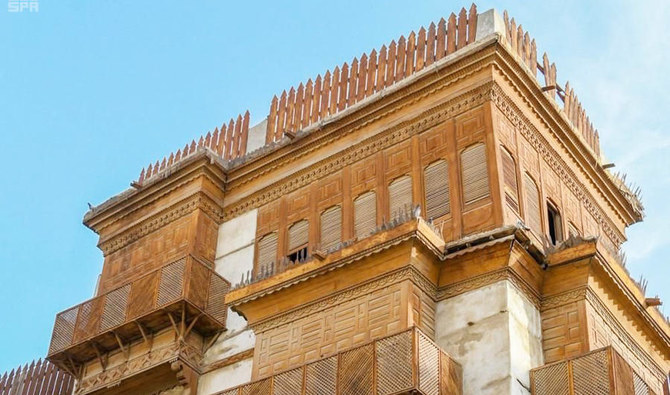
- The Red Sea port city was added to UNESCO’s World Hertitage Sites list in 2015
Riyadh prepares to host special meeting of World Economic Forum

- Special meeting scheduled to be held in Riyadh on April 28-29
- Heads of state and senior private sector executives to attend
RIYADH: Final preparations are taking place this week in the Saudi capital, Riyadh, for a special meeting of the World Economic Forum in the city on April 28 and 29.
Heads of state and senior executives from the public and private sectors are expected to be among the participants, who will discuss a range of global economic issues and developments under the theme “Global Collaboration, Growth and Energy for Development.”
The aim of the meeting is to find solutions to a host of global challenges relating to humanitarian issues, the climate and the economy. On the sidelines of the main event, the Kingdom will host exhibitions and other events to highlight the latest developments and trends in areas such as sustainability, innovation and culture.
The selection of Riyadh as host of the special meeting reflects the extensive partnership between Saudi Arabia and the WEF, officials said.
It builds upon the Kingdom’s active participation and contributions to the WEF’s Annual Meetings in Davos.
The agenda is designed to rekindle the spirit of cooperation and collaboration with various panel discussions, workshops, and networking opportunities. It represents a significant gathering of global leaders and experts dedicated to forging a path toward a more resilient, sustainable, and equitable world.
Saudi defense minister, British counterpart discuss military escalation in region
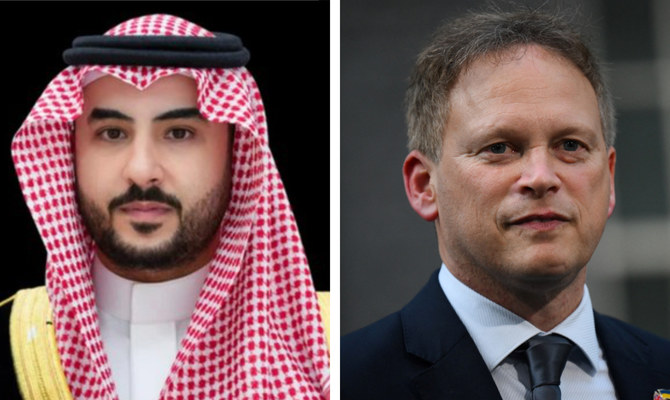
RIYADH: Saudi Arabia’s Minister of Defense Prince Khalid bin Salman received a phone call on Monday from UK Secretary of State for Defense Grant Shapps.
The officials discussed military escalation in the region, its repercussions, and efforts towards containing it.
They also reviewed strategic bilateral relations and military cooperation.
Saudi air force joins several allies in UAE for start of multinational military exercise Desert Flag
Saudi air force joins several allies in UAE for start of multinational military exercise Desert Flag
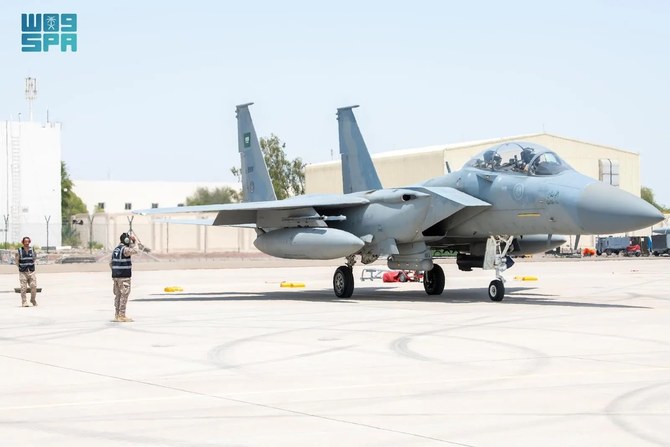
- Other nations taking part in the 3-week exercise include Oman, Turkey, the US, France and South Korea
RIYADH: Personnel from the Royal Saudi Air Force joined their counterparts from several allied nations on Monday at the start of Desert Flag, a multinational military exercise taking place at Al-Dhafra Air Base in the UAE.
Over the next three weeks the forces will take part in various flight-related exercises, including defensive and offensive counter-air operations, close-air support, and combat search and rescue missions, the Saudi Press Agency reported. In addition to Saudi Arabia and the UAE, the participating nations include Oman, Turkey, the US, France and South Korea.
Lt. Col. Adel bin Saeed Abu Malha, the commander of the participating Saudi air force group, said the exercise is designed to facilitate the exchange of military expertise in strategic planning and execution within a simulated wartime environment. It also aims to enhance the operational readiness and combat efficiency of air and technical-support crews and to bolster the ties between the nations’ forces, he added.
Six Saudi F-15SA fighter jets, with their full air, technical and support crews, are taking part in the exercise, Abu Malha said.
The Saudi air force group arrived at Al-Dhafra Air Base last week to begin their preparations. They were greeted by Brig. Gen. Khalid Alhajiri, the military attache at the Saudi Embassy in the UAE.
Marat — a Saudi town with deep roots

- Administratively affiliated with Riyadh Province, Marat oversees several centers, villages and settlements, enjoying governmental facilities and private institutions that have contributed to its development and population growth
RIYADH: One of the oldest cities in Saudi Arabia’s Najd, Marat, lies tucked away in the Al-Washm region of central Saudi Arabia.
Its intriguing history is illuminated in the Arabic book “Glimpses into the History of Marat” by Saudi researcher Abdullah Al-Duwaihi, first published in 2012, yet relevant for those wishing to explore the Kingdom’s history.
Al-Duwaihi painstakingly documents the town’s geography, landmarks, social fabric, governance and centuries-old foundations across about 700 pages. The book also covers Marat’s importance on the Hajj caravan route, its scientific legacy, mosques, sports and culture, archaeological sites and a variety of other facets of society. Accounts from geographers and travelers are included.

The book opens with an overview of Marat governorate, situated in Al-Washm, northwest of Riyadh. It borders the governorates of Al-Quway’iyah and Dhurma to the south, Shaqra to the north, Thadiq and Huraymila to the east and Al-Dawadmi to the west.
Administratively affiliated with Riyadh Province, Marat oversees several centers, villages and settlements, enjoying governmental facilities and private institutions that have contributed to its development and population growth.
FASTFACTS
• When King Abdulaziz traveled from Riyadh to Makkah, one of his first official stops was Marat, where the historic Hijaz Road crossed.
• Iconic natural landmarks in Marat include Ghudair Kumait, a basin where floodwaters accumulate without stagnating.
Iconic natural landmarks profiled in the book include Ghudair Kumait, a basin where floodwaters accumulate without stagnating. It is named after the prominent Jabal Kumait landmark known for its location and form, offering panoramic views of the town. This has led to the popular adage, “Secure Kumait, and you secure Marat,” explains the author.
Along with highlighting Marat’s past, Al-Duwaihi also explores locations such as the ruins of Al-Aroosah and Al-Walidi Well, which was attributed to the Prophet Muhammad’s companion Khalid bin Al-Walid. According to historical accounts, he dug the well during his journey through Marat en route to battle the renegades in Al-Yamama.
Royal history
When King Abdulaziz traveled from Riyadh to Makkah, one of his first official stops was Marat, where the historic Hijaz Road crossed, and where he would stay for several days. Royal tents were set up outside the palace in Marat — built in 1350 AH (1930) — days in advance of his arrival.
As the royal caravan approached, telegrams were sent to prepare for essential supplies. Vehicles and caravans passing through the route would also halt in the town for rest and replenishment, transforming Marat into a bustling commercial hub, especially during the Hajj season, when it teemed with tents, vendors and shoppers lining the roadside.
The book features accounts from various travelers, both foreign and local, who passed through Marat and documented their experiences, including George Forster Sadleir, British explorer Harry Philby, American geologist Thomas C. Barger, Amin Al-Rihani, Youssef Yassin, Ahmed Al-Kadhimi and Atiq Al-Biladi. Yet he overlooked mentioning Ahmad Abdul-Ghafoor Attar, who provided captivating glimpses of the town in the 1960s.
One of the book’s notable features is its exploration of Marat’s architectural heritage, highlighting the coexistence of ancient mud-brick neighborhoods and modern structures. Although the old government palace was demolished due to encroaching modern developments, had it remained, it would have stood as a prominent landmark of the province.
Notable old quarters within Marat’s walls include Bab Al-Naqeeb, Zab’arah, Junaib, Al-Hafsiah, Banban, Hayit Hussain, Al-Shuraiqy, Shari’ah, Subaitah, Qa’rah, Suwail and Al-Naqbah. Outside the walls are Al-Qusaibah, Al-Muraiba’, Al-Ju’di, Bab Al-Naifiah, Qubaibah, Suwaydan, Al-Hulailah, Bab Al-Barr and At-Tuwaila.
According to Al-Duwaihi’s book, Al-Amiriah School was the governorate’s first educational institution, built in 1368 AH (1948). Constructed from traditional mud bricks in Marat’s northeastern quarters, the boys’ elementary school followed design templates set by the Kingdom’s educational authorities at the time.
Later, in 1387 AH (1967), the first school for girls, known as Al-Awwal School, was inaugurated, initially located in the western part of the old town before later relocating to a new governmental premises. Over subsequent years, a series of schools for both boys and girls were progressively opened.
Focus is on the Saudi environment in photo contest with SR100,000 prize up for grabs
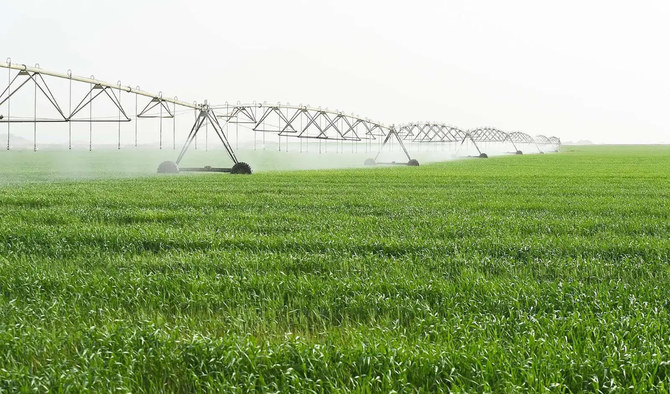
- The competition ties in with Environment Week 2024, which runs from April 28 to May 5 in the Kingdom with the theme ‘Do you know your environment?’
RIYADH: Photographers in the Kingdom have until April 27 to enter a competition that is looking for the best images and videos that showcase the Saudi environment.
The aim of the contest, organized by the Ministry of Environment, Water and Agriculture’s Environmental Awareness Initiative, is to promote environmental awareness through the use of art, and engage the community in the creation and sharing of content that highlights the natural splendor and beauty of the Kingdom.
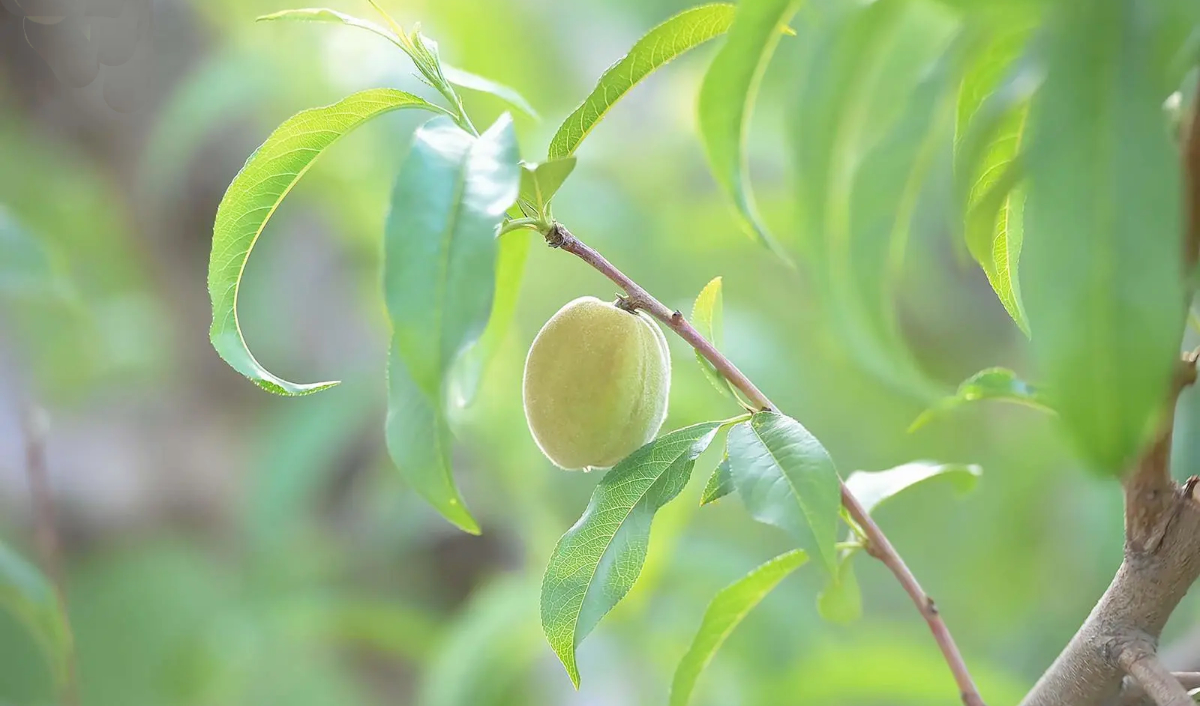
The competition ties in with Environment Week 2024 in Saudi Arabia, which will run from April 28 to May 5 with the theme “Do you know your environment?” Photography enthusiasts across the country are invited to submit photographs, videos or films that best illustrate the nation’s environment.
A panel of judges will choose the winners, who will receive cash prizes of up to SR100,000 ($26,660), the Saudi Press Agency reported. Entrants must own the copyright to their submissions, which should not have been awarded prizes in any other contests. The ministry reserves the right to use submitted images in exhibitions, conferences or on its social media platforms. The photographers’ moral rights to their work will be respected.
The aim of the ministry’s Environmental Awareness Initiative is to raise public understanding of environmental issues, and foster a sense of responsibility toward protecting the Kingdom’s natural resources by encouraging sustainable behaviors among individuals and groups.





